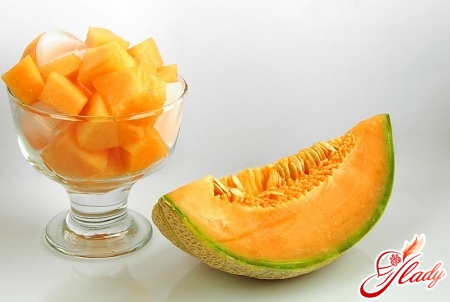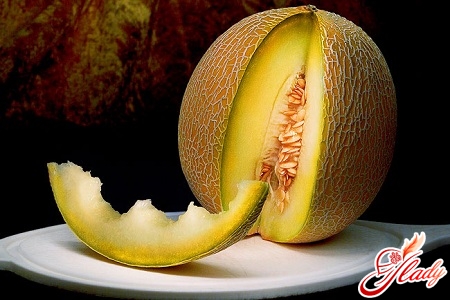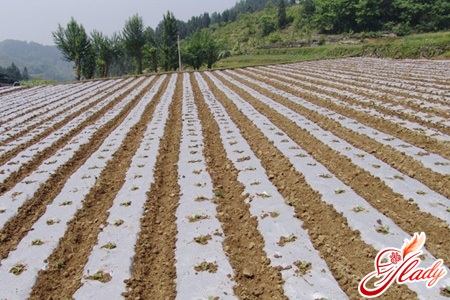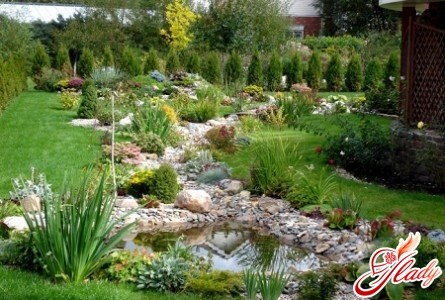 Melons are different ... But they are all well and amicablygrow only in suitable conditions. Because they are not only different, but also capricious. Although their vagaries are peculiar. And the fact is that the melon, unlike many (if not all) garden crops, does not like watering and is afraid of excess moisture. A kind of lover of the Finnish sauna in the open air: hot and dry. And, of course, she also likes to sunbathe in the sun, that is, she is absolutely not afraid of direct sunlight. Therefore, the southern regions of our vast country are considered the most suitable place for growing melons in the open ground. It's a shame, of course, to the inhabitants of the middle belt or the northern regions, that you can not just take and plant a melon in the garden. But why not? Can! It turns out that growing melons in the open ground is possible not only in the south of Russia.
Melons are different ... But they are all well and amicablygrow only in suitable conditions. Because they are not only different, but also capricious. Although their vagaries are peculiar. And the fact is that the melon, unlike many (if not all) garden crops, does not like watering and is afraid of excess moisture. A kind of lover of the Finnish sauna in the open air: hot and dry. And, of course, she also likes to sunbathe in the sun, that is, she is absolutely not afraid of direct sunlight. Therefore, the southern regions of our vast country are considered the most suitable place for growing melons in the open ground. It's a shame, of course, to the inhabitants of the middle belt or the northern regions, that you can not just take and plant a melon in the garden. But why not? Can! It turns out that growing melons in the open ground is possible not only in the south of Russia.
Choose and prepare the plot
This southern capricious person feels comfortableOnly on warmed up areas, well closed from cold winds. Preparing a landing site should be taken care of in the autumn. At this time, the future melon garden is excavated on one bayonet spade and fertilized with humus at a rate of about four kilograms per square meter. If there are loamy soils on your site, you can "podpushit" beds for melons, adding to one square meter half a bucket of clean river sand. After that, we leave the bed for the winter with a calm soul, and in the early spring we dig it once more and fertilize it with potassium and phosphate fertilizers. Proportions and recommendations look at the packs of fertilizers you have purchased. Immediately before planting, the soil for melon is fertilized with the overgrown manure or special nitrogen fertilizers.
Cooking Seeds
Soil preparation is only the beginningpreparatory period. In addition to the beds, we need to prepare seeds for growing seedlings. By the way, such seeds can be purchased not only in the store, but also prepared independently. Melon seeds behave very strange. Of the fresh seeds of the past harvest, very strong and strong plants grow, but it is almost impossible to wait for them. The fact is, they have a lot of male flowers, and almost no women. Therefore, for a good and guaranteed harvest you need to sow the seeds two or three years ago. For sowing, large seeds are selected, which it is desirable to treat with a special composition purchased in the store. Increases seed germination and enriches them with microelements and a mixture of solutions (0.05%) of boric acid and zinc sulfate, in which the seeds are soaked for twelve hours. For growing melons in the Non-Black Earth region, experienced gardeners recommend hardening seeds. To do this, they are first lowered into a warm (thirty-thirty-five degrees) water, and then taken out and aged for about twenty degrees. Then the temperature is reduced to almost zero (but not lower!) And the seeds stand for another eighteen hours. After this time, the temperature is again raised to twenty degrees. Such hardening should be done three times during the week before planting the seeds. 
Growing sprouts
For seedlings we will need peat pots(or peat tablets) with a diameter of about ten centimeters. Cardboard or plastic containers can be filled with a special purchase soil for the cultivation of garden crops or soil with the following composition: peat and sand in a ratio of nine to one with the addition of ten cups of wood ash per ten liters of soil. Before planting, the seeds can be soaked for a day and discarded "dummy". In each prepared pot, plant two or three seeds to a depth of about five centimeters. Before the appearance of the first shoots, it is necessary to keep the daytime temperature at least twenty degrees, and at night - not less than fifteen. A week after the emergence of sprouts, they are thinned, leaving in pots one strong sprout. After the appearance of the third real leaf, the seedlings are plucked, causing lateral shoots to develop. They care for melon seedlings as well as for the shoots of other plants. It is true that watering a melon should be moderate and it is necessary to ensure that water does not fall on the leaves and stems. In order to prevent the black leg, the soil in the seedling pots is sprinkled with a layer of dry river sand. Seeds of melon sow in April, and after twenty-five days the seedlings can already be planted in the open ground.
We plant a melon in the ground
For growing melons in the open ground on the advanceprepared and fertilized beds make holes at a distance of seventy centimeters along the length and width of the bed. Seedlings are planted only after the warm weather is established, and frosts pass. In the middle band this is the first day of June. The main condition for a successful transplant is to cause minimal damage to the root system. Therefore, they plant the melon seedlings together with the clod of earth. Before planting, the wells are thoroughly filled with water, a little humus is put in and planted with seedlings, without burrowing the stem. The top of the root coma should protrude slightly above the surface of the socket. After that, the seedlings are watered again and sprinkled with dry soil. For the first day or two, young plants should be shaded from the direct sun. If in your region in the early summer strong day and night temperature differences, then you can protect the still fragile plants with temporary film shelter. Such mini-fellows are left on the beds at night and cleaned during the day. By the way, these devices will save your planting and from the rains, which melon does not like. 
We care for melon
The entire period of growing in the open ground melon requires weeding, loosening, watering and hilling. In addition, scraps of melons need to be pinched all the time.
- Loosening
The first two times it is necessary to loosen rows between rowsto a depth of not more than fifteen centimeters. Then you need to loosen the soil to a depth of ten centimeters, and you can not do it directly near the plant. When the first side lashes appear, melon hills, pouring a platen of earth to the stem.
- Watering
As a melon plant melon does not like excessiveof moisture. Therefore, you need to water it more than moderately. If, on your summer cottage, the morning dew falls abundantly, then you do not need to water the melon. Sprinkle the plants in the aisles, trying not to splash water with leaves and whips
- Topping
The first pinch of melon is carried out at the stageseedlings. After adapting the plants in the open ground, the main stem is plucked again (above the sixth-seventh leaf). At the same time and the same pinch and side whips. In addition, all the shoots remove excess flowers and leave no more than three fruits, not tied in a row, but at some distance from each other. It is necessary to carefully cut out all the non-fertile shoots.
- Additional fertilizing
The first feeding of melons in the open ground is carried outtwo weeks after plant transplantation. At that moment, it is fed with ammonium nitrate or organic fertilizers (mullein, chicken manure). Next, you need to constantly fertilize the plants every ten days. You can buy complex fertilizers or water melon infusions of chicken manure, mullein, grass with the addition of wood ash. Top dressing should be stopped as soon as the fruits begin to ripen. Spread beds with melon should be as necessary. In addition, adjust the direction of growth of the weaves. As soon as the whip reaches half a meter in length, point it toward the opposite row, so that it does not slip into the interstice. It is also necessary to place planks under each of the fastened fruit so that melons do not rot from contact with moist soil. In general, growing melons in the open field is not much different from growing cucumbers. If you have cucumbers growing in the cottage, it means that the melon can not only grow, but it can also be in time. However, this problem is also quite solvable. The melons, taken before frost, perfectly ripen at home. Still, it is better to choose early maturing melon varieties for growing outdoors. But the main thing is to observe only three conditions.
In fact, it is possible to grow a melon in the open ground almost everywhere, except in the northern regions. But for this, people have come up with greenhouses and greenhouses. So dare: the impossible is possible! We advise you to read:









